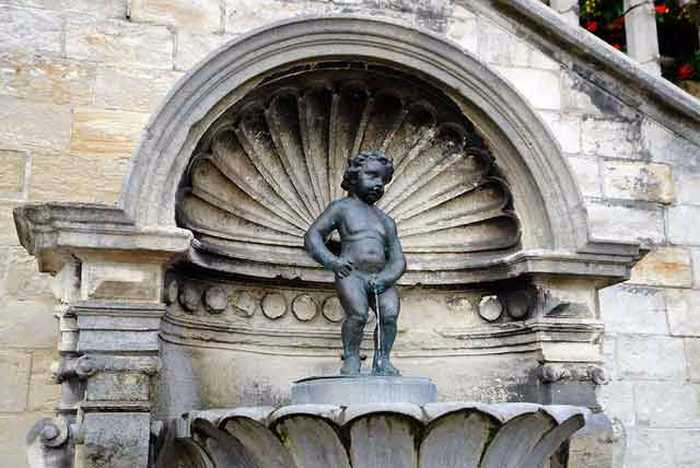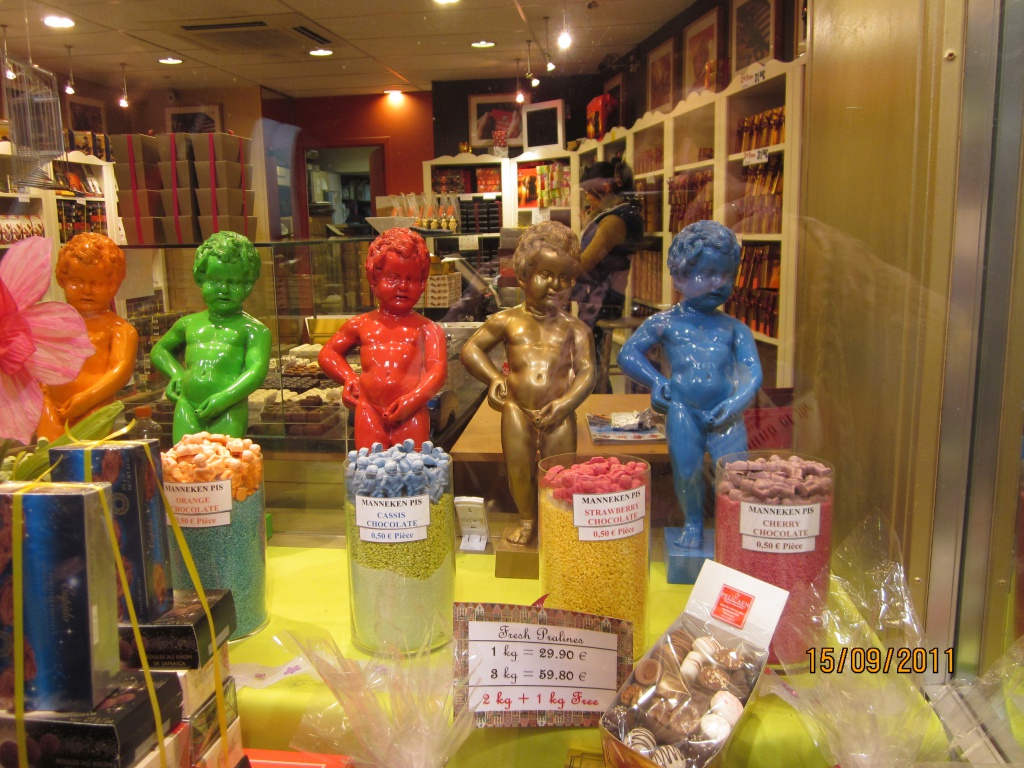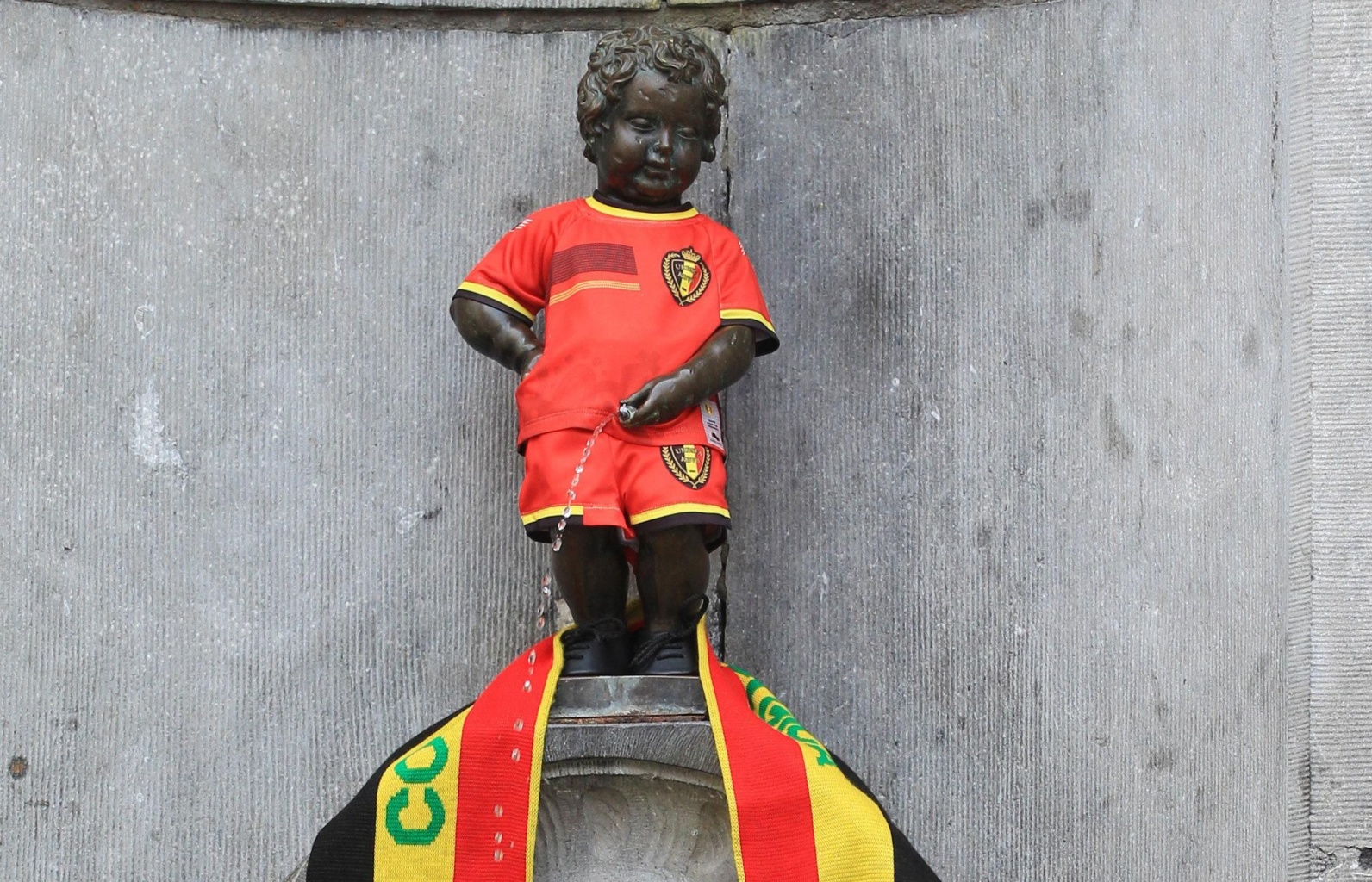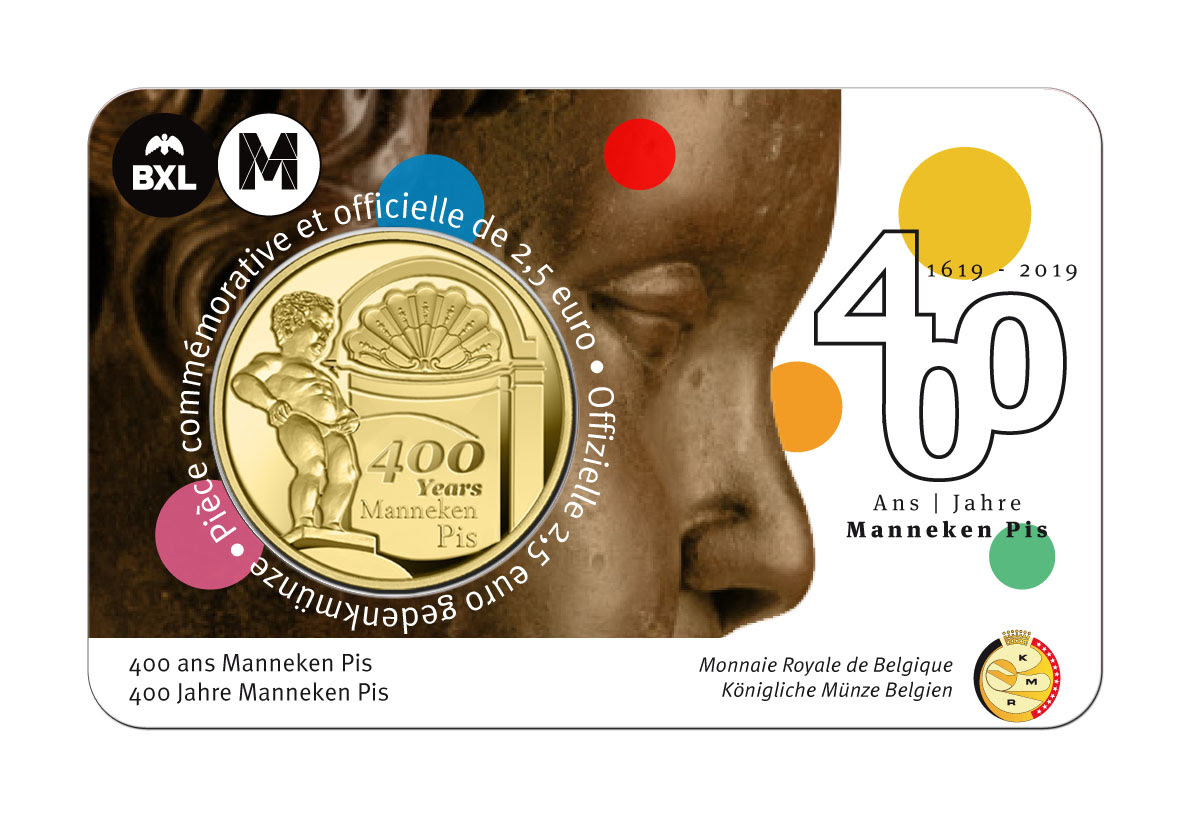There are few who have never heard of so-called Manneken Pis, the most famous tourist symbol of the capital of Belgium, Brussels. In 2019, this regular mischief nicknamed Manneken Pis celebrated the 400th anniversary. On this occasion, the Royal Mint of Belgium minted a commemorative coin in the denomination of €2.5. This collectors’ coin, 120,000 copies only, is a legal means of payment, but it will not be in circulation.
The Manneken Pis is a fountain, a 55-cm sculpture of a urinating boy installed in 1965 in a corner niche at the intersection of two narrow streets in the historical centre of Brussels.

Every day, 1.5 thousand litres of water go through the bronze mischievous Pis in the public eye, and more than 30 thousand tourists come to have a look at this ‘natural process’. Once a year, during the festival of the Belgian Brewers Guild, a tourists’ favorite figure that turned 400 years old in 2019, makes a frothy beer fountain that you can immediately taste - the beer on draught.
Many of those who visited Brussels buy not only chocolate figures of Manneken Pis as souvenirs but also small sculptures in the form of a bell, bottle opener and even a corkscrew. It is allowed to reproduce Manneken Pis in any form, with one exception: if the souvenir Manneken Pis is dressed in any of the suits officially gifted to him, a separate permit from the Brussels City Hall is required.

In addition to seeing the fountain itself, tourists are also invited to visit the Manneken Pis Museum in the historical square of Brussels, the Grand-Place, where over 1,000 clothes are exhibited. Among them, there is a spacesuit in honor of Yuri Gagarin's space flight, and a Russian folk costume donated by the first president of Russia Boris Yeltsin and his wife Naina Yeltsina during their visit to Brussels in 1993.
A few years ago, a team of scientists at the Free University of Brussels checked its authenticity. Using X-ray spectral analysis and a laboratory study of the alloy composition and corrosion of bronze, the experts found out that the sculpture exhibited in the museum was really made by Jerôme Du Quesnoy in 1619.
The Brussels Manneken Pis, however, is not the oldest sculpture of a pissing boy in Belgium. The Chronicles of Gerardsbergen, East Flanders, indicate that the figure of a pissing boy installed in its central square appeared here as early as 1499 and, thus, it is more than one century older than the world-famous symbol of Brussels.
Replicas of the Brussels-based Manneken Pis that are an official gift from the Brussels City Hall, can now be seen in France, Japan, Great Britain, Spain and Monaco.
However, for millions of tourists from all over the world, the Brussels hero of an anniversary remains the most attractive Manneken Pis.



